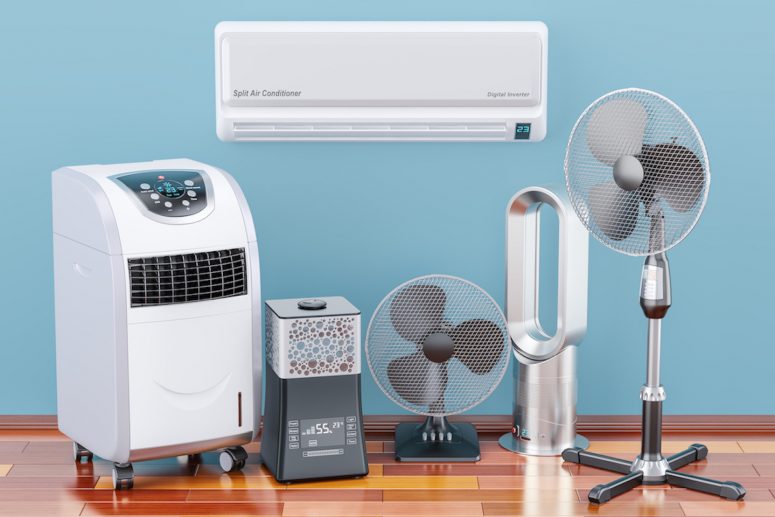
If you’re in the market for a new air conditioner or trying to switch, you might come face-to-face with the options of a split system and an evaporative cooling system. There are several differences, including the method of air condition maintenance required, the cost of the air conditioner installation, and the overall functions and benefits each type of system offers. To help you understand the differences, we’ll go through the most primary factors.
The Way They Work
While both systems possess indoor and outdoor units, they cool the air down in different ways.
A split system uses refrigerant to cool hot air from the outside, which it brings inside and subsequently recirculates throughout the space. They can be targeted towards specific rooms and work well in every climate because they’re made especially for enclosed areas. They also work with filters that trap bacteria and allergens better than an evaporative cooling system would.
An evaporative cooling system similarly takes hot air from the outside, but instead of cooling the air down with coolant, it runs the air across wet cooling pads and gives the inside environment said air. The installation needs to be in an open space to work, such as an open window, door, or rooftop entry space, but this ensures that the air it brings in is always fresh since it doesn’t recycle air like in a split system.
The Cost
When looking at air conditioner installation, a split system is about twice as much to install as an evaporative cooling system. The latter is also considered more energy-efficient and will likely lead to a lower power bill.
Whether or not you’re willing to go with air conditioner installation for the more expensive option depends on how satisfied you are with the air conditioner service provided by the split system. An expert air conditioner service can help you figure out which system is better for your budget.
The Moisture Factor
As mentioned previously, split systems work best in all types of environments because they recirculate inside air. Although this is very effective for heating and cooling, and although the filters do trap in most harmful particles, the air can get dry and irritate those with allergies or sensitive skin and eyes.
An evaporative cooling system adds moisture to the air due to the method of its cooling. Because of this, however, evaporative cooling systems don’t work well in humid environments and can make the inside environment too moist.
Maintenance
Air conditioner maintenance concerning an evaporative cooling system is relatively easy. This type of system only requires seasonal maintenance, whereas a split system needs to have its filters cleaned regularly. Evaporative cooling systems can, however, give homeowner problems with water leakage, in which case you’d need to call someone in for air conditioner repair.
Air conditioner repair for both of them should be done by a professional air conditioner service, though minor problems can be checked on by yourself, of course. Proper air conditioner maintenance should be a priority, no matter which option you’re working with. Yearly check-ins on your AC unit should be done by experts who can tell you whether or not you need air conditioner repair before it might be too late to catch any problems before they worsen.
In summary, split systems are more expensive and recycle air, but work in any climate and trap dust, dirt, and allergens in filters. Evaporative cooling systems don’t work in humid environments and can add too much moisture to the air, but they’re a cheaper option and provide fresh air to an inside environment.
